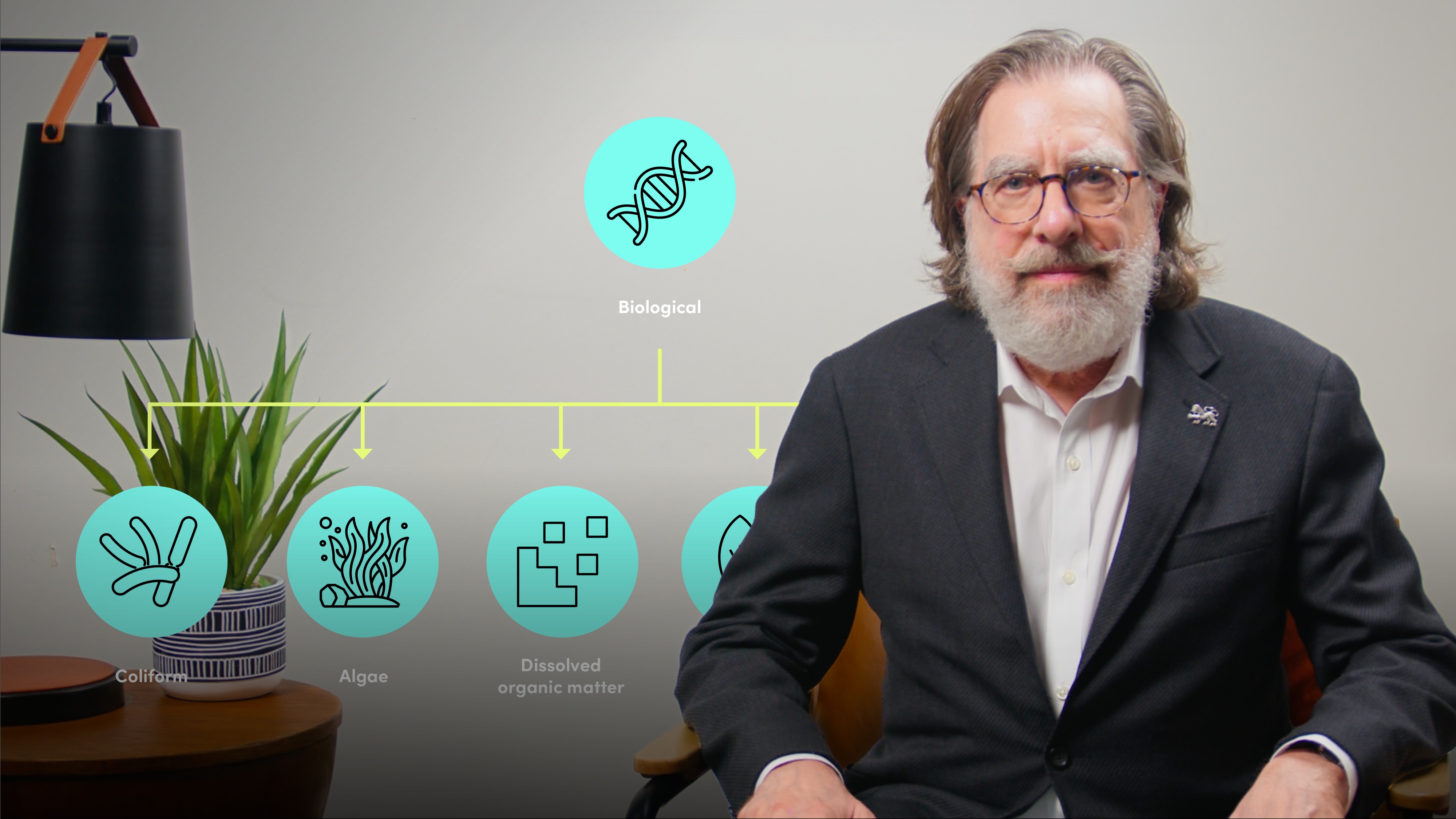
What Determines Water Quality?

Will Sarni
Leader: Corporate water strategy
There’s nothing better than a cold glass of water. Learn how hidden contaminants can make your drinking water unsafe and why water quality is crucial for your health.
There’s nothing better than a cold glass of water. Learn how hidden contaminants can make your drinking water unsafe and why water quality is crucial for your health.

What Determines Water Quality?
13 mins 2 secs
Key learning objectives:
Identify the water quality parameters
Understand sources of water contamination
Outline the impact of pollution on health and the environment
Overview:
Contaminated water can look, smell and taste the same as clean water, making regular testing essential. Water quality is assessed by analysing key parameters that indicate whether water is safe for consumption, environmental health, and industrial use. Water quality parameters are divided into three main categories: physical, chemical, and biological. Water pollution has severe consequences for human health such as waterborne diseases and skin and respiratory issues. Addressing water pollution requires a combination of improved waste management, reduced chemical use, and better water treatment and sanitation measures.
Summary
Physical parameters
Chemical parameters
Biological parameters
What determines water quality?
Water quality is assessed by analysing key parameters that indicate whether water is safe for consumption, environmental health, and industrial use. Contamination of drinking water can come from various sources. The biggest danger is that contaminated water can look, smell and taste the same as clean water, making regular testing essential.
What are the key water quality parameters?
Water quality parameters are divided into three main categories: physical, chemical, and biological. These indicators help determine the safety and usability of water.
Physical parameters
- Temperature: Affects chemical reactions, solubility, and biological activity
- Turbidity: Measures water clarity and the presence of suspended particles
- Electrical conductivity: Indicates the presence of dissolved ions
Chemical parameters
- pH: Determines acidity or alkalinity, impacting aquatic life and chemical reactions
- Dissolved oxygen: Essential for aquatic organisms and an indicator of overall water health
- Nutrients (phosphorus, nitrogen, nitrate, ammonia): Excess levels can lead to algal blooms
- Hardness: Measures the concentration of dissolved minerals, especially calcium and magnesium
- Heavy metals: Can be toxic to human health even at low concentrations
- Total dissolved solids: Indicates the overall amount of dissolved substances
Biological parameters
- Coliform bacteria: Indicate contamination from sewage or animal waste
- Algae and phytoplankton: Can reflect nutrient levels and impact water quality
- Dissolved organic matter: Affects aquatic ecosystems
- Chlorophyll: Used to monitor algal biomass
What are the main sources of water contamination?
Water contamination arises from both human-made and natural sources. These pollutants can enter water bodies through direct discharges, runoff, or atmospheric deposition. Human-made sources include agriculture (such as fertilisers, pesticides, and animal waste), industrial activities, oil spills, sewage overflows, landfills and septic systems. Natural sources include mineral leaching, volcanic activity, deforestation, climate change and transboundary pollution.
How does water pollution affect human health?
Water pollution has severe consequences for human health such as:
- Waterborne diseases
- Toxic chemical exposure
- Microplastic ingestion
- Skin and respiratory issues
How does water pollution affect the environment?
Water pollution has severe consequences for the environment such as:
- Ecosystem degradation
- Eutrophication
- Sedimentation
What steps can be taken to address water pollution?
Addressing water pollution requires a combination of improved waste management, reduced chemical use, and better water treatment and sanitation measures. Regulations, such as the US Superfund programme, play a critical role in cleaning up contaminated sites, but ongoing efforts are needed to prevent pollution at the source and ensure access to safe drinking water.

Will Sarni
Will Sarni, a hydrogeologist and author, has been working on water challenges for most of his career. He has focused on corporate sustainability and water strategy for the past two decades. Sarni is an optimist and believes we can solve wicked water problems. He lives in Colorado and the American West, which faces water scarcity challenges. The American West is a major agricultural region for the US, exporting crops. To have thriving cities and agriculture and manufacturing sectors in the region, we must solve water challenges.
Will has written several books on corporate water strategy, energy-water-food nexus, technology and policy innovation, and a children's book on water.
There are no available Videos from "Will Sarni"

